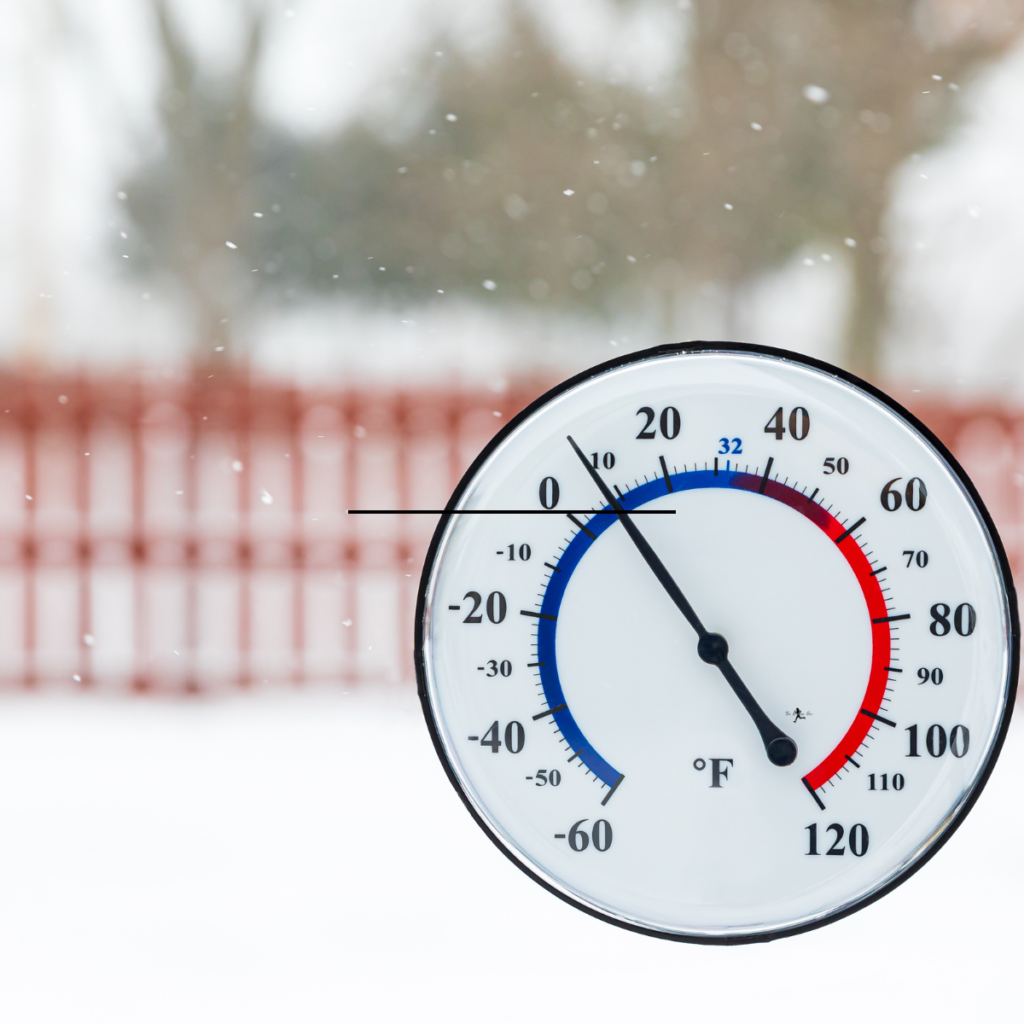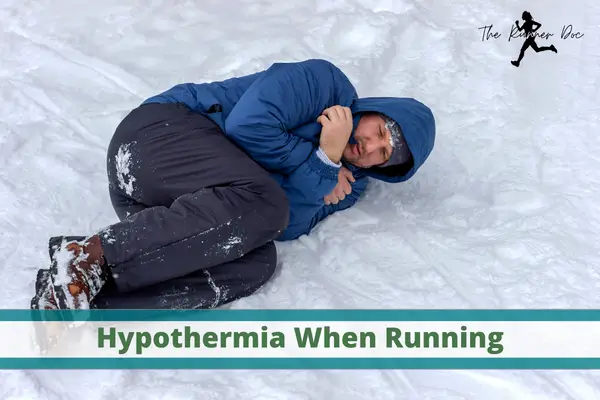Battling the Cold: What Runners Need to Know About Hypothermia
Running and Hypothermia
Unless you live in a colder climate, hypothermia isn’t probably something that you think about too often, if at all. I know living in Kansas, where we get cold but not all the time, I really hadn’t thought much about hypothermia in the past. But I recently saw some research and articles about hypothermia and runners in most climates. So I decided to dig deeper and learn more.
As it turns out, many runners can get hypothermia, even when it is not very cold out! My mind was a little blown!
Hypothermia is a serious medical condition that can occur when the body’s core temperature drops too low. It’s most commonly associated with cold weather, but it can also affect runners who overexert themselves during long-distance runs or races. By understanding the causes of hypothermia and taking steps to reduce your risk of developing it, you can continue to enjoy running outdoors even during the chilly winter months!
What is Hypothermia
Hypothermia is a medical condition that occurs when your core body temperature drops below 95 degrees Fahrenheit (normal is around 98.6 degrees Fahrenheit).
When a person’s body temperature falls between 90 and 95 degrees Fahrenheit, they are suffering from mild hypothermia; however, if their temperature dips below the critical mark of 90 degrees Fahrenheit, then this constitutes severe hypothermia which is life-threatening.
People often associate hypothermia with cold winter weather, but runners can actually get hypothermic during any season if they are not prepared for the elements.
Risk Factors of Hypothermia When Running
Running in cold weather, especially if you’re not dressed appropriately, can put you at risk for hypothermia. If the temperature is below 45 degrees Fahrenheit, your body will be more likely to cool off quickly and become hypothermic.
If you are running in wet conditions or high winds, this can also increase your chances of developing hypothermia in even warmer conditions. This is because wind and water can both cool off your body more quickly than air alone.
Finally, if you are running for a long period of time without taking breaks or consuming food or fluids, this can also increase your risk for hypothermia since your body is using up energy reserves faster than it can replenish them.

What Causes Hypothermia?
When exercising in cold weather, the body attempts to maintain it’s core temperature by moving blood away from the periphery and towards the middle of the body to minimize heat loss.
This can happen from prolonged exposure to cold or wet weather or from wearing inadequate clothing for the conditions. The thing is though, it doesn’t have to be very cold, 45 degrees and below is enough for hypothermia to be a risk to runner’s.
Related Article: Running in the Heat and Humidity
When Do Runners Get Hypothermic
Runners can become hypothermic when running in temperatures as high as 60 degrees Fahrenheit, or even lower if the weather is wet or windy. Cold and wet clothing, combined with sweat from exercise, increases a runner’s risk of developing serious medical conditions

Symptoms of Hypothermia
- shivering
- slurred speech
- abnormally slow breathing
- cold, pale skin
- loss of coordination
- fatigue, lethargy, or apathy
In cases of mild hypothermia, the person will remain aware but their body will shiver involuntarily in an attempt to create heat. Mild is a core body temperature between 90-95 degrees Fahrenheit.
In extreme cases of hypothermia, a person can experience drowsiness or even lose consciousness. Furthermore, this dangerous state has the potential to cause weakness and confusion along with an abnormal heart rate.
If not addressed quickly enough, it can lead to shock and death due to cardiac arrest. Severe hypothermia is when the core body temperature drops below 90 degrees Fahrenheit.
Causes of Hypothermia in Runners
The simple answer seems the most obvious, running in the cold. But there is more to it than that, and everyone’s definition of cold can be a little different.
For example, I’m from Kanas and think that 70 degree weather is pretty perfect and beautiful. However, my cousins that were born and raised in Arizona…..not so much. They think 70 degrees is freezing! So keep in mind that “cold” is relative.
It is probably a surpise to most that hypothermia is a real risk in temperatures as high as 45 degrees Fahrenheit, or even higher if the conditions are also windy and wet. Sub freezing temperatures are not required for hypothermia in runners.
For athletes taking part in endurance activities such as marathons, sweat rapidly cools their bodies when exposed to cold weather while strong winds make it evaporate faster – heightening the possibility of developing hypothermia.
Tips for Preventing Hypothermia in Runners
First and foremost, make sure that you are dressed appropriately for the weather. Be aware of the fact that even if it’s not “that cold” outside, running will be making your body temperature drop quickly due to sweat evaporating.

A savvy runner can avoid hypothermia by adhering to some easy-to-follow tips:
- Dress for the cold Favorite Cold Weather Running Gear
- Wear several layers of clothing, especially modern synthetic long johns that keep moisture away from the body. Layering is critical to help trap the warm air inbetween the clothes to keep you warm.
- Keep extremities Warm Pay special attention to your extremities. Bundle up with a knit hat, gloves, and thick socks for the best insulation against cold weather conditions.
- Protect from wind and rain Light wind-pants paired with a windbreaker jacket will help keep out any chill from wet winds as well. These pieces are essential investments when it comes to protecting yourself in wet and windy conditions!
- Drink enough fluids and don’t bring cold fluids with you. Room temp is better!
- Get back before extreme fatigue sets in
- Carry concentrated snack foods like raisins to ward off possible energy dives
- Run with a partner
Favorite Cold Weather Running Gear
When you’re out running in cold, wet and windy conditions, pay close attention to how your companions are speaking and the form of their running. It is often that one person from a group may be okay while another could be experiencing early signs of hypothermia.
Everyone responds differently in severe weather conditions; some individuals tend to become more susceptible quickly than others.
Treatment Options for Those Experiencing Signs of Hypothermia During a Race or Training Session
This is a medical emergency in most cases and needs medical treatment. However, first aid on site should include keeping yourself or your runner friend dry and covered with wool blankets.
Shelter him/her from any wind and water focusing on providing heat to the neck, underarms, and groin. The focus of the heat shold be directed at the person’s core.
Try to get yourself or the person you are with to a warm location if possible. If not, wait for emergency personnel to arrive.

Calling 911 may not be necessary if it is mild hypothermia and the person is still shivering. If the shivering reflex has stopped, transport to the nearest hospital should happen immediately or calling 911.
Warning for runners suffering from hypothermia. Do not massage or rub the person to help “warm them up”. Those actions can make symptoms worse by loosening lactic acid and thereby lowering your blood pH.
Final Thoughts on Hypothermia with Runners
Hypothermia is a serious risk for runners and can occur even in temperatures around 45 degrees Fahrenheit. It’s important to be aware of the weather conditions before you head out on your run, and make sure that you are dressed appropriately with multiple layers to keep warm. If someone does experience symptoms of hypothermia while running, seek medical attention immediately or call 911 if necessary.
By following these tips and taking caution when running outdoors during colder months, we can reduce our chances of developing this dangerous condition!
AFFILIATE DISCLOSURE
As an Amazon Associate, I earn from qualifying purchases. This post may contain affiliate links. If you use these links to buy something we may earn a commission. The Site may contain links to affiliate websites, and we receive an affiliate commission for any purchases made by you on the affiliate website using such links.
All information should be used as a tool for more knowledge on the subject topic, to use as references for later articles where applicable, or just to keep it in mind during future exercise routines or activities.
This article is not meant to give medical advice or to replace professional health care. Should any ailment occur please contact your doctor or physical therapist immediately to keep yourself safe and prevent further damage.
The author is not liable for any personal or commercial damage directly or indirectly related to the content hereof. You are responsible for adhering to local laws and regulations regarding health & safety, including proper use of equipment or safety gear, and compliance with governing healthcare associations, and state, and federal regulations.
References for Hypothermia and Running
Running in the cold, Running and Hypothermia

Dr. Abby Siler, PT, DPT is a Physical Therapist with 10 years of experience in a variety of settings. She has spent the majority of her time treating athletes in orthopedic clinics and worker’s compensation cases. She is a runner herself for the past 15 years and a lifelong athlete. Dr. Abby loves to teach runners how to stay injury free and out of her clinic.







